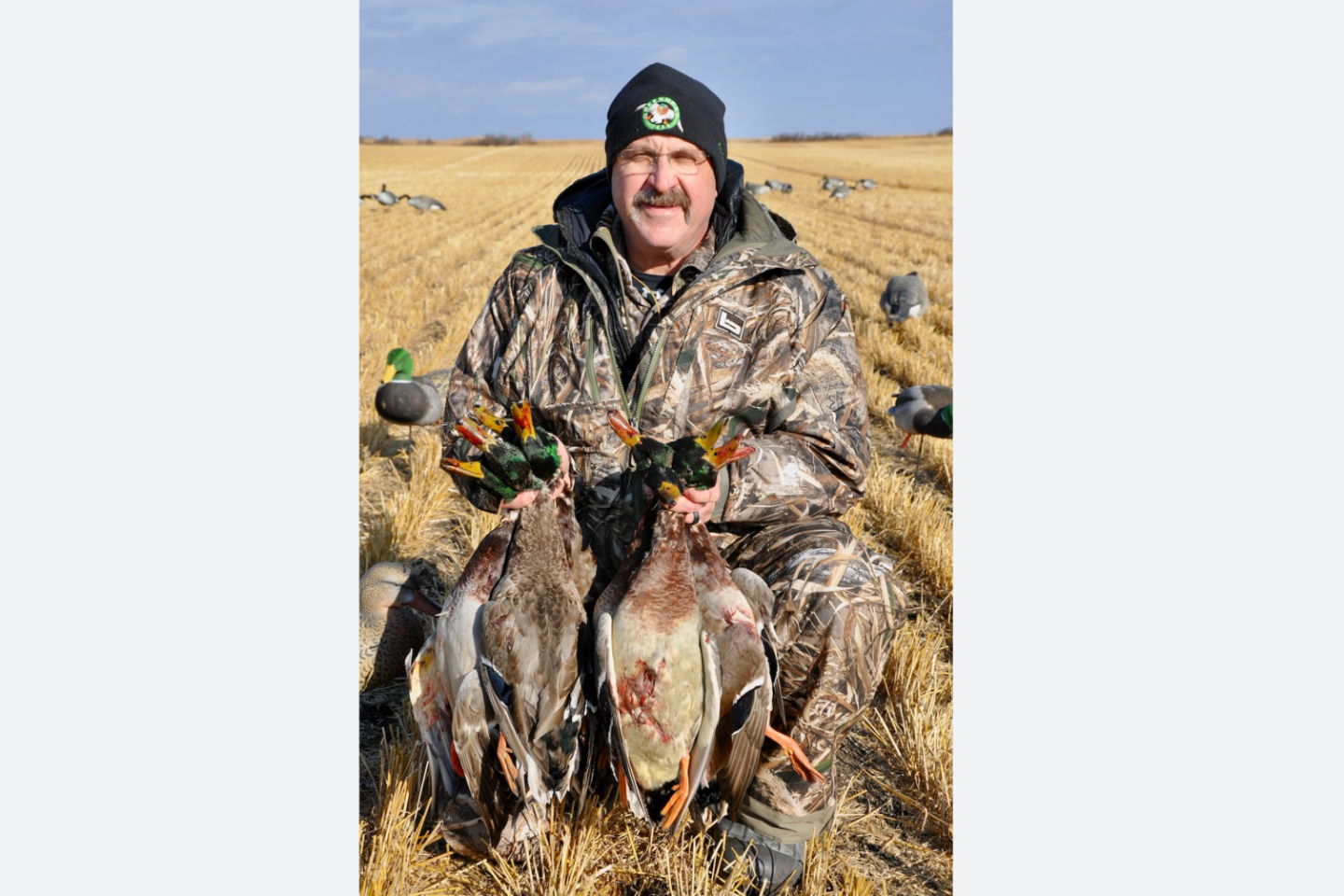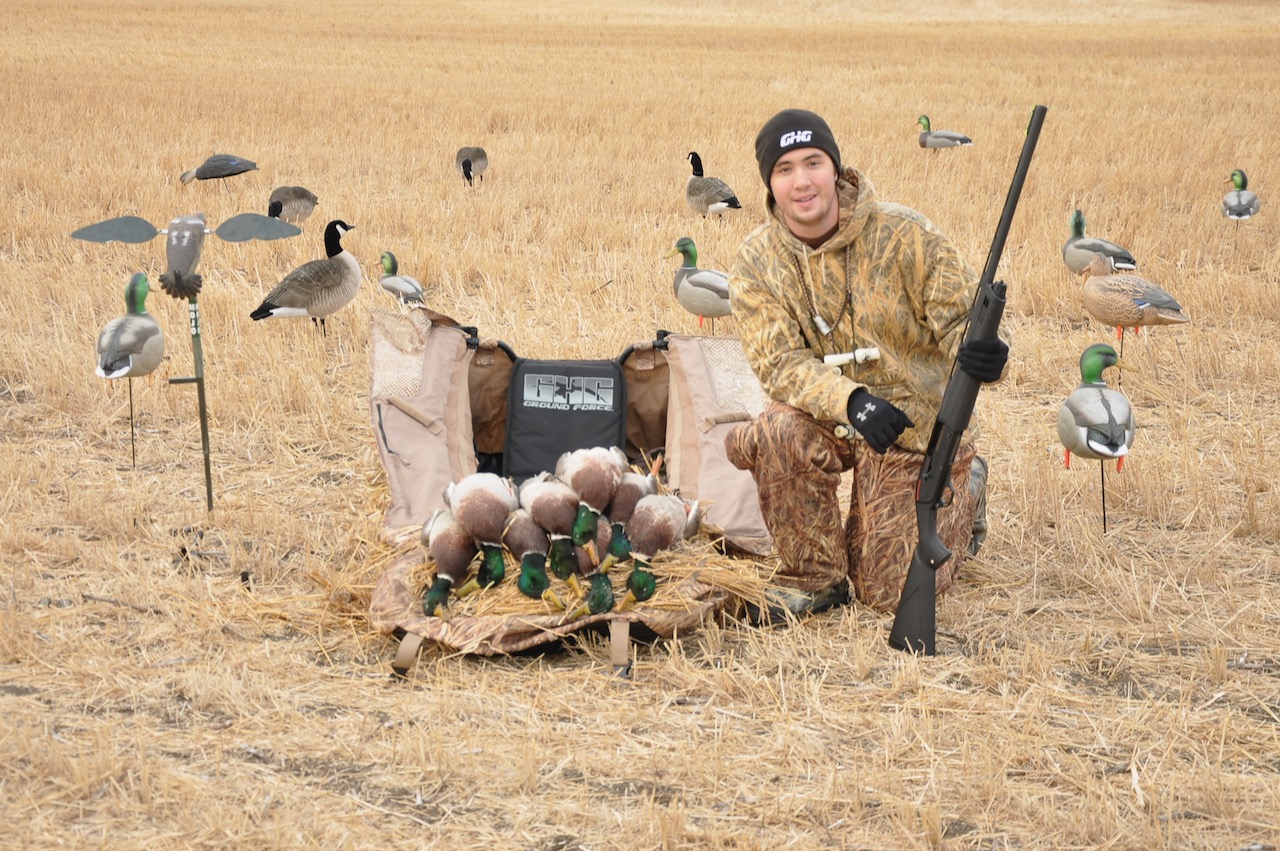DUCKS AFIELD
From scouting to decoying to choosing loads, a primer on how to successfully hunt dabblers on dry land
Advertisement
#2 DECOY CHOICES
Ducks feeding in a dry field are a sight to behold. They are aggressive eaters, so you’ll often see birds at the back of the flock waddling to the front to get ahead of the others. At times, the greed to feed is so strong that walking isn’t fast enough—birds near the back will often fly or hopscotch instead to the front of the group. While this occurs, more ducks from the roost will continue to join the group on the ground, landing as close to the front of the flock as possible.
Advertisement
Given all this activity, it’s imperative to use motion decoys in your set-up. Half of my spread is comprised of both windsock dekes and decoys on motion stakes, both of which move like waddling birds in even the slightest of breezes. I also include two to six spinning-wing decoys to increase the illusion of ducks landing in the spread.
Ducks aren’t fussy about who they feed with, so they’ll also come into goose decoys or a mix of both duck and goose dekes. Truth be told, I’ve shot more dry-land ducks over goose decoys than I have over duck dekes. That’s why I usually set up a mixed spread of both types when hunting agricultural fields. The larger goose decoys can be seen from further away, which helps keep incoming ducks on course; they may also pull in some bonus geese. Ducks tend to land among the duck decoys, so place them near your blind and landing zones to ensure better shooting opportunities.


